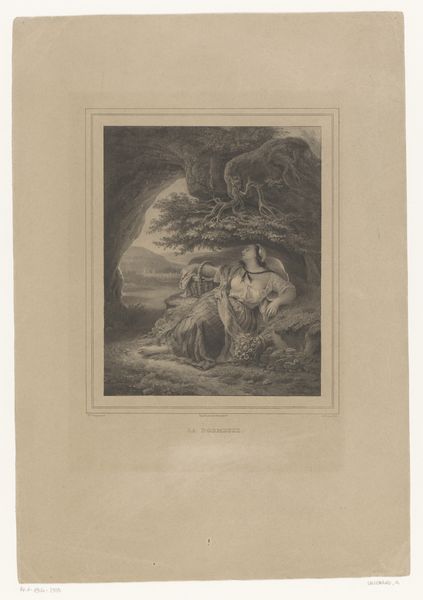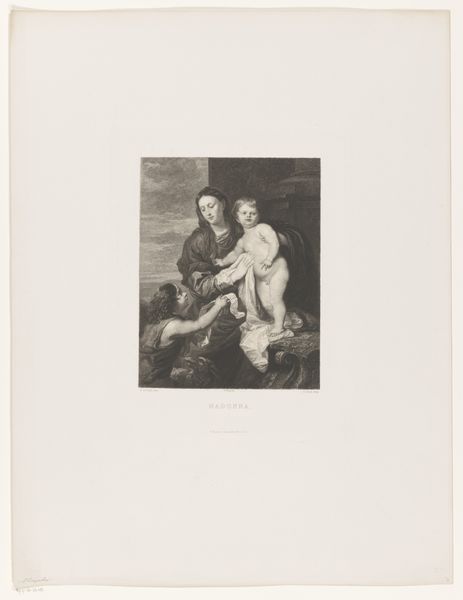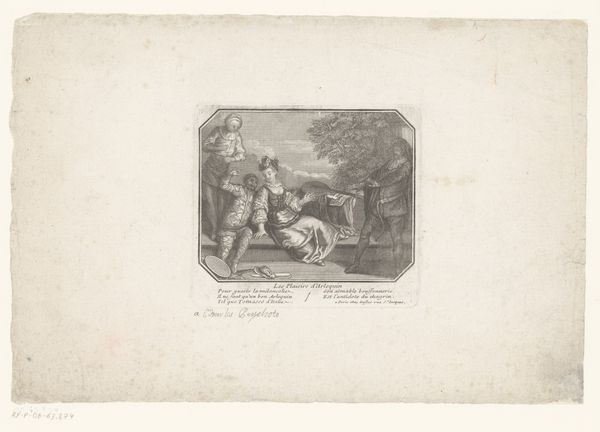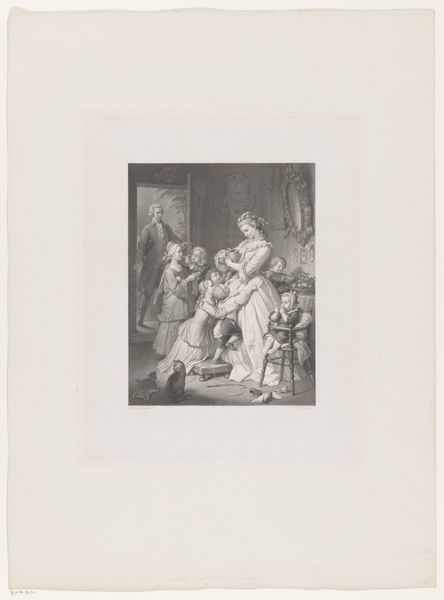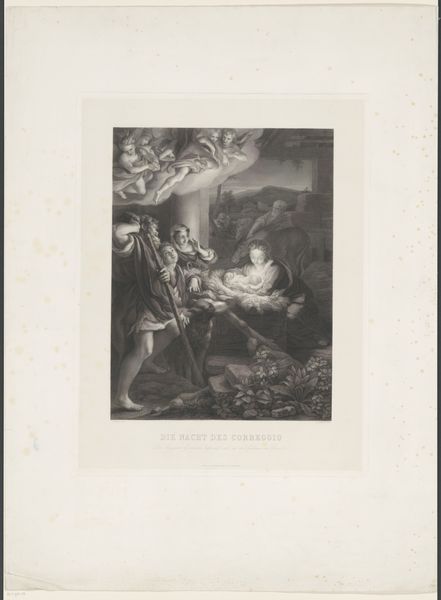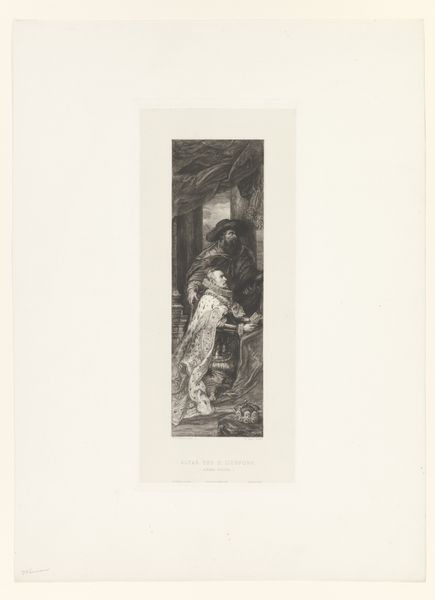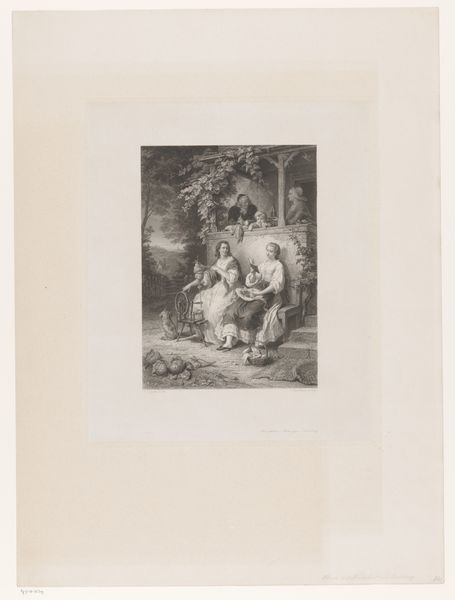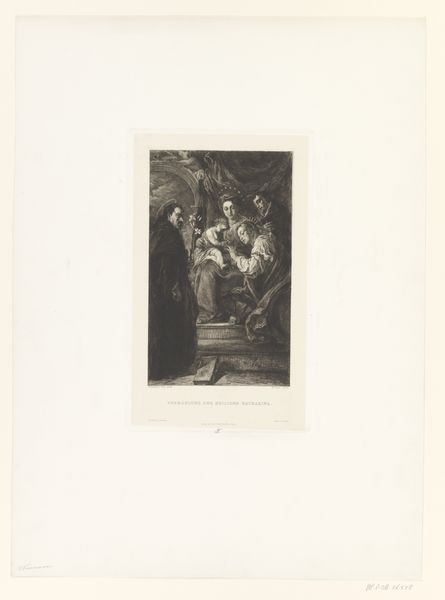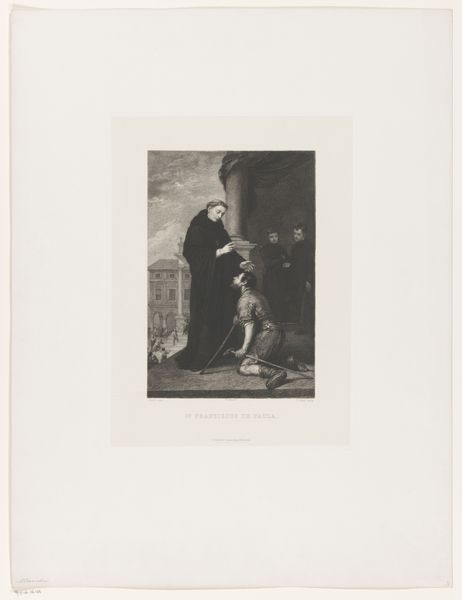
Dimensions: 400 mm (height) x 290 mm (width) (billedmaal)
Curator: What a pensive scene. It looks like grief or deep contemplation permeates everything. Editor: Indeed. Let's consider this lithograph, a print from the 1880s titled "Ossian," created by Adolph Kittendorff and held at the SMK, Statens Museum for Kunst. It's interesting, because while landscape and figuration are present, so is historical painting. Curator: It has the air of a historical narrative, certainly. The bearded figure dominates the composition. His downcast eyes, the hand supporting his head... are we meant to read him as burdened by memory? The presence of the youth, conversely, injects an element of urgency, perhaps even concern. Editor: Undoubtedly, he embodies the weight of the past. We're seeing visual tropes for wisdom and sorrow intertwined. That flowing beard, the book he holds - though perhaps he's too distraught to actually read it - these evoke the sage, the griever, perhaps a prophet, all wrapped into one. And of course, note the woman ghost. Curator: Precisely! What symbol could represent Romanticism more suitably than spectral figures emerging from darkened landscapes? The misty, ethereal quality further elevates it, but does it all steer a bit too far into sentimentality? Romanticism often teeters on that edge. Editor: The history around "Ossian" adds important layers. Remember, these poems, originally purported to be ancient Gaelic works discovered and translated by James Macpherson, later were shown to have a more complex authorship, a blend of tradition and his own invention. The popularity of "Ossian" fueled Romanticism's taste for the melancholic, the sublime power of nature, and, indeed, the invented tradition. Curator: Ah, so this image is a symbol of a cultural phenomenon built on selective authenticity! A powerful reflection on the creation of national identity, really. The misty veil surrounding it seems especially apt now. It masks truth while evoking grandeur. Editor: Exactly. What at first glance appears a simple emotional scene deepens when you consider its place within the cultural landscape, which is why I am often drawn to study historical works like this one. Curator: Absolutely, now when I see it, the work evokes for me how legends are consciously manufactured. What seemed melancholy initially becomes a bit more calculated, a constructed expression of national soul-searching. Editor: And for me, it still holds an undeniable visual power. It remains a poignant testament to the human drive to connect to our past, real or imagined.
Comments
No comments
Be the first to comment and join the conversation on the ultimate creative platform.
